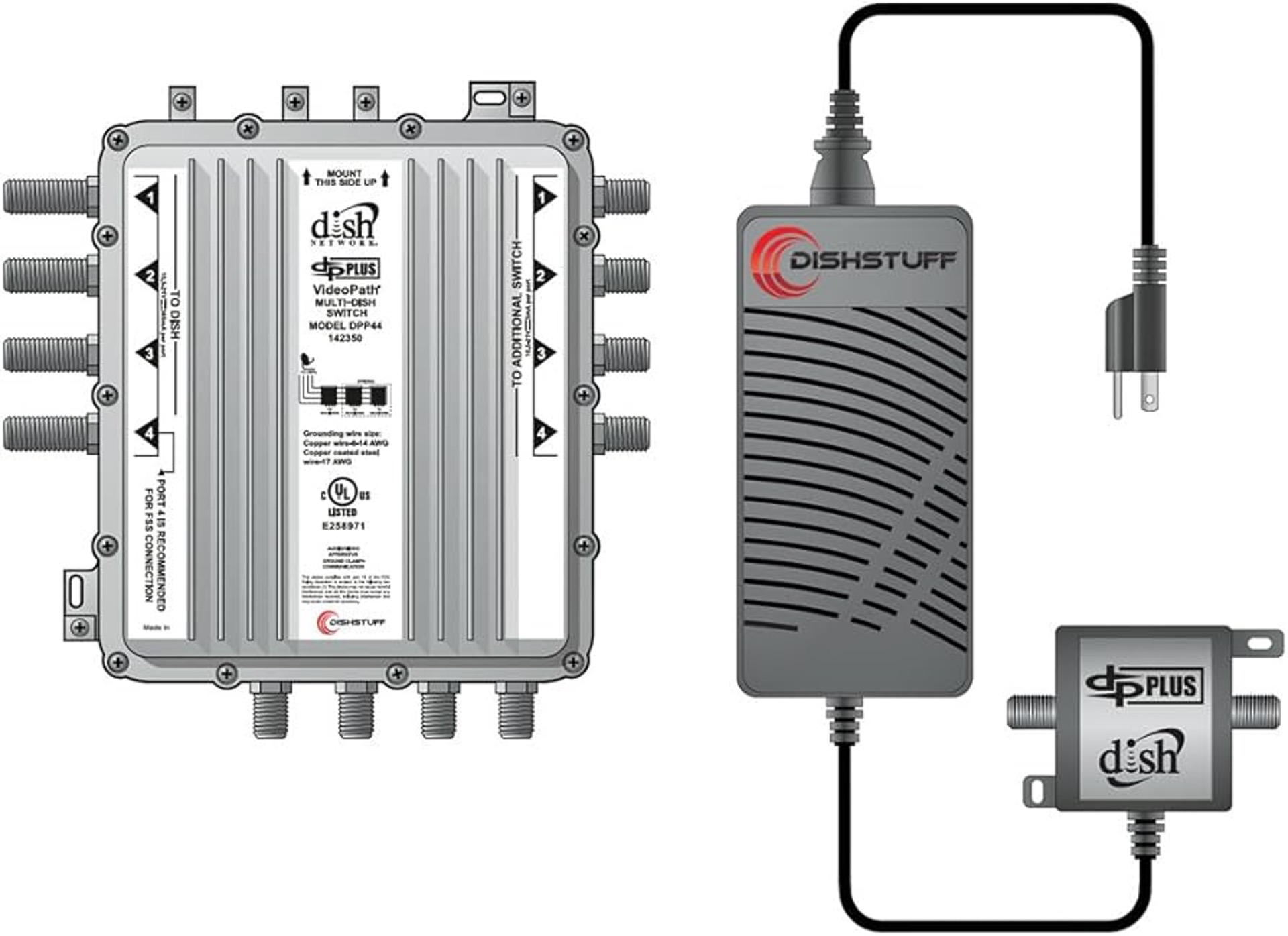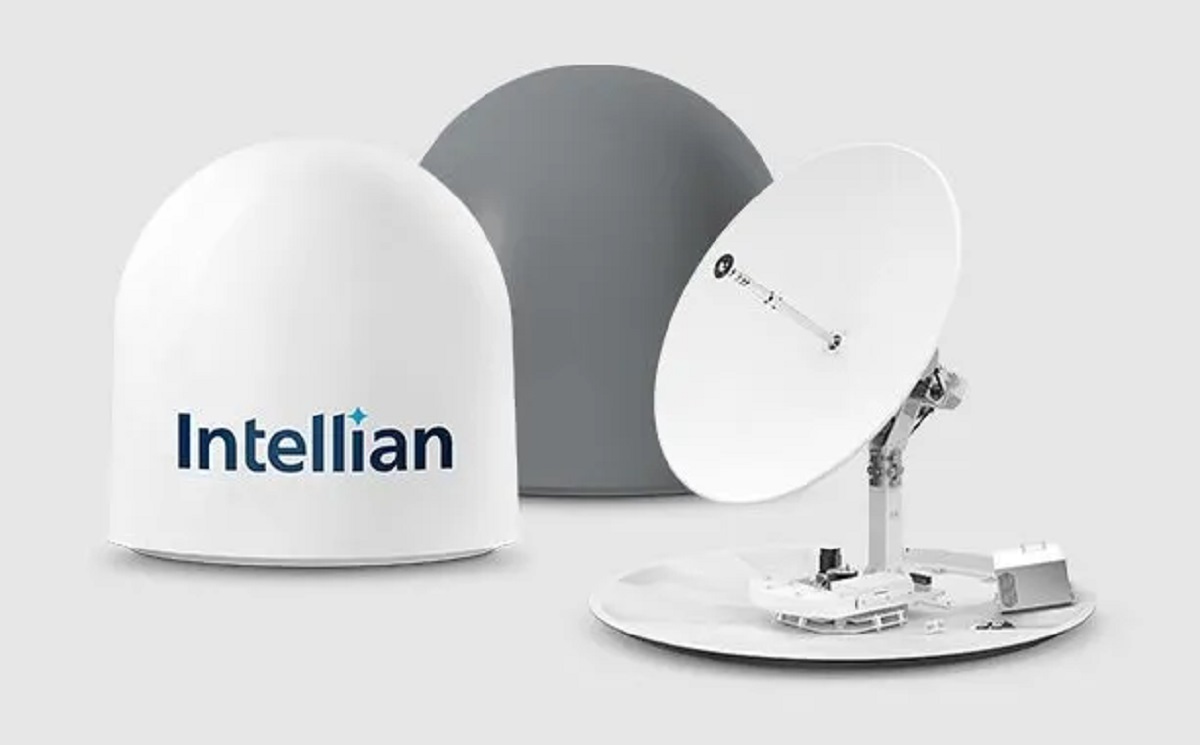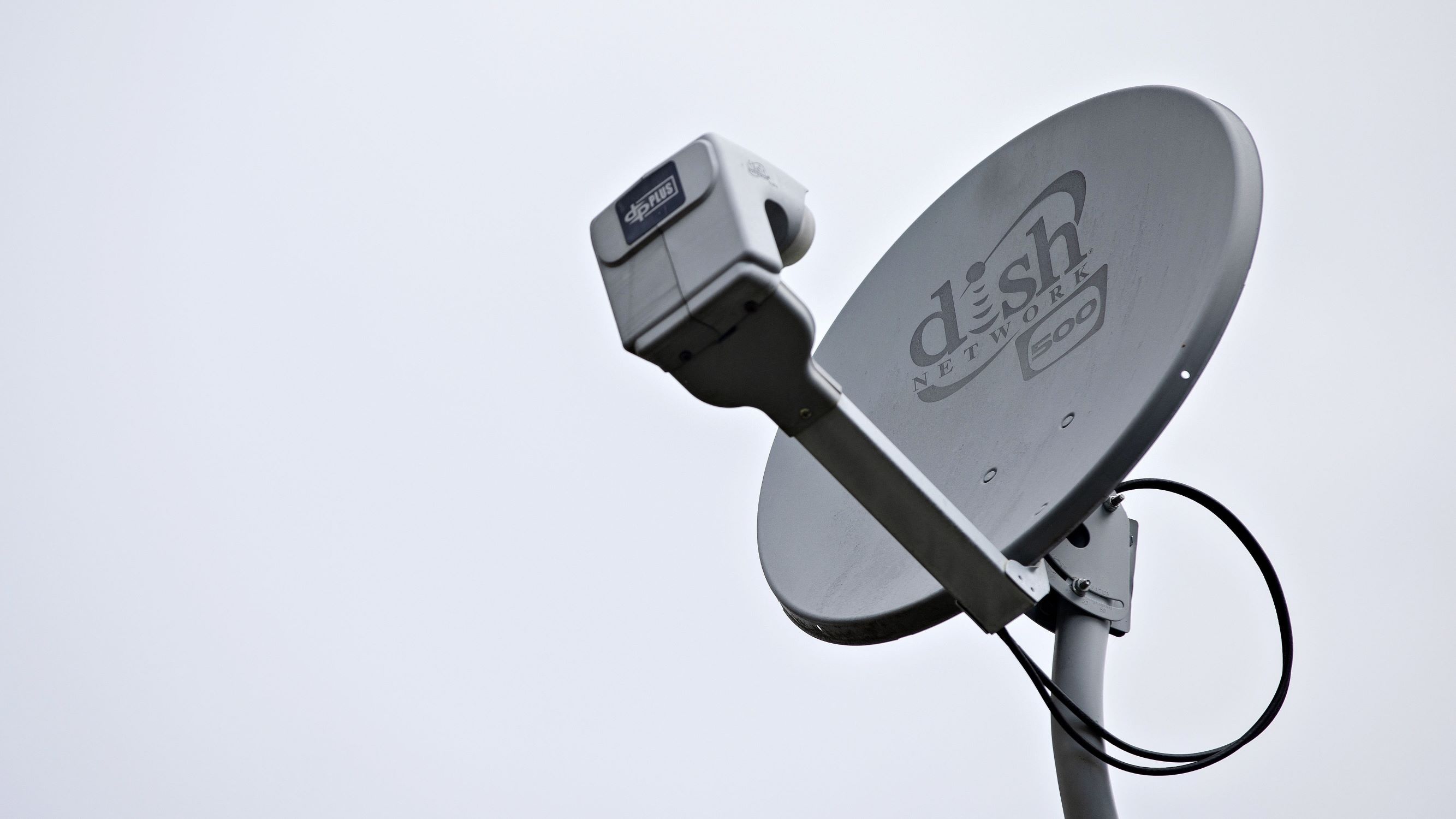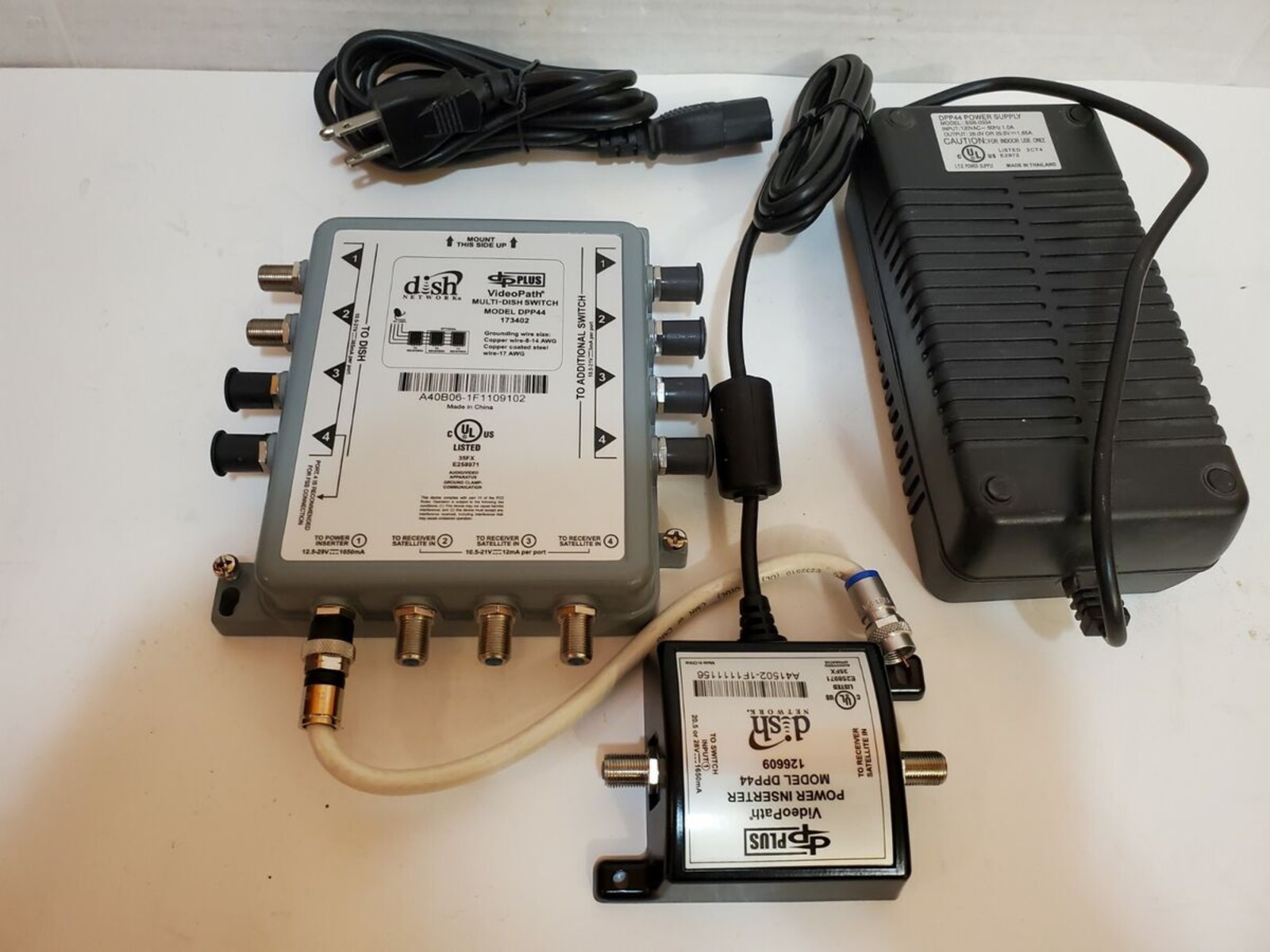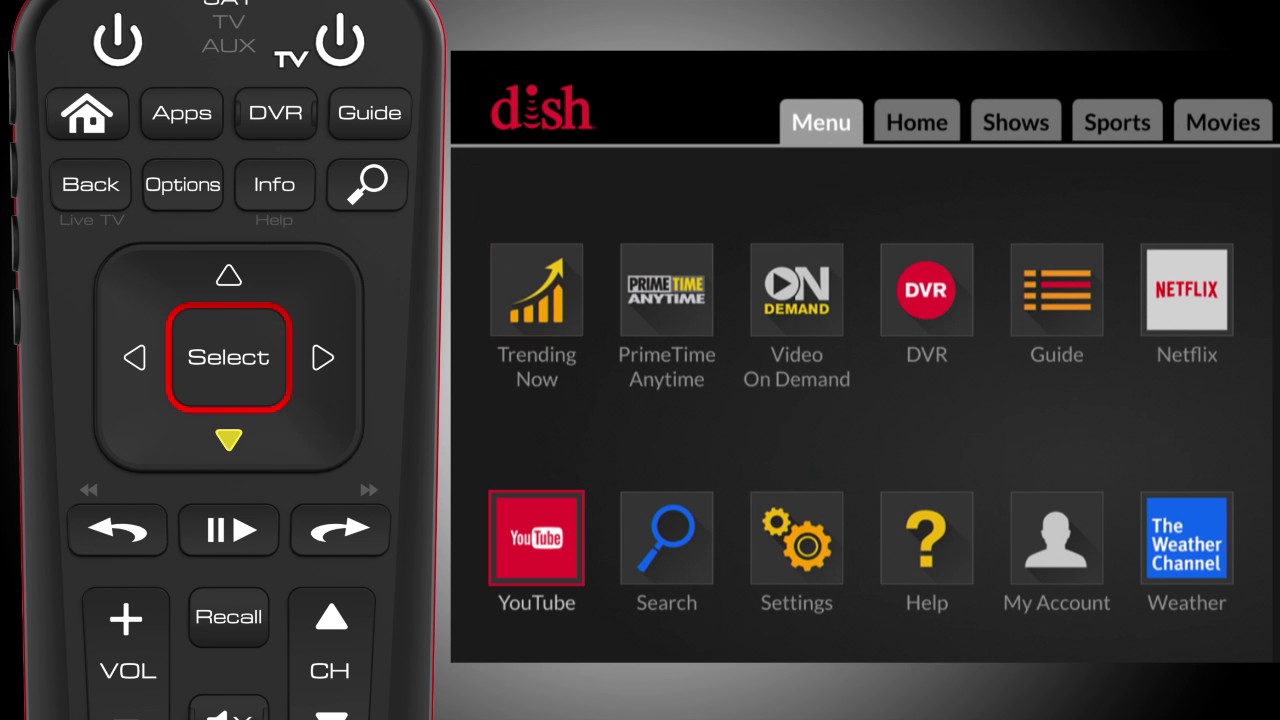Introduction
If you're a Dish Network subscriber, you may have heard about the importance of a Dish Network switch in your satellite TV setup. Understanding what a Dish Network switch is and how it functions can help you optimize your viewing experience. Whether you're a new subscriber or simply curious about the technical aspects of your satellite TV system, this article will provide valuable insights into the world of Dish Network switches.
A Dish Network switch is a crucial component in a satellite TV system, responsible for directing signals from the satellite dish to the receivers in your home. Without a properly functioning switch, the signal distribution to multiple receivers can be compromised, leading to poor picture quality and interrupted service. Therefore, gaining a clear understanding of this device and its various types can empower you to troubleshoot common issues and make informed decisions when upgrading or expanding your satellite TV setup.
In the following sections, we'll delve into the different types of Dish Network switches available, explore their unique features and functionalities, and shed light on what these essential components actually look like. By the end of this article, you'll have a comprehensive understanding of Dish Network switches, enabling you to harness the full potential of your satellite TV system. Whether you're a tech enthusiast, a DIY troubleshooter, or simply someone who wants to comprehend the intricacies of their entertainment setup, this article aims to demystify the world of Dish Network switches and provide you with valuable insights into these indispensable devices.
What is a Dish Network Switch?
A Dish Network switch, also known as a multiswitch, is a fundamental component in a satellite TV system that facilitates the distribution of satellite signals to multiple receivers. It acts as a central hub, receiving signals from the satellite dish and then directing them to the appropriate receivers throughout the home. This functionality is essential for households with more than one TV, as it allows for independent viewing on different televisions without compromising signal quality.
One of the primary functions of a Dish Network switch is to ensure that each receiver receives the specific signals intended for it, thereby enabling seamless and uninterrupted viewing experiences. Without a switch, the satellite signals would not be properly distributed, leading to potential signal degradation and service disruptions.
Furthermore, Dish Network switches are designed to support different satellite TV technologies, such as high-definition (HD) and 4K programming. This versatility allows subscribers to enjoy a wide range of content options while maintaining optimal signal quality and reliability.
It’s important to note that the type of switch used in a satellite TV setup can impact the number of receivers that can be connected, the range of supported satellite orbital locations, and the overall performance of the system. Therefore, understanding the capabilities and limitations of different switch models is crucial for ensuring an efficient and robust satellite TV configuration.
As technology continues to evolve, Dish Network switches have also advanced to meet the changing needs of subscribers. Modern switches incorporate features such as power-saving modes, compact designs, and enhanced signal processing capabilities, contributing to improved energy efficiency and overall performance.
Overall, a Dish Network switch serves as the backbone of a satellite TV distribution system, enabling households to enjoy a diverse range of programming on multiple televisions while maintaining high-quality signal delivery. By understanding the role and significance of this essential component, subscribers can make informed decisions when configuring or upgrading their satellite TV setups, ultimately enhancing their viewing experiences and maximizing the potential of their entertainment systems.
Types of Dish Network Switches
When it comes to Dish Network switches, there are several types available, each catering to specific requirements and configurations. Understanding the distinctions between these switch variants is crucial for ensuring compatibility with your satellite TV setup and maximizing the performance of your system.
1. DISH Pro Plus (DPP) Switch: This switch is designed to support both legacy and current receiver models, offering compatibility with a wide range of devices. It enables the connection of multiple receivers and provides the flexibility to access programming from different satellite orbital locations, making it a versatile choice for households with diverse viewing preferences.
2. DISH Pro Hybrid (DPH) Switch: The DPH switch is engineered to accommodate the latest technologies, including HD and 4K programming. It supports the transmission of both satellite and over-the-air (OTA) signals, allowing subscribers to integrate local channels into their viewing lineup. This switch is ideal for users seeking an all-in-one solution for satellite and OTA content delivery.
3. DISH Pro Single (DPS) Switch: As the name suggests, this switch is designed for single-tuner receivers, providing a straightforward solution for households with basic viewing needs. While it may not offer the same level of versatility as multi-tuner switches, it serves as a cost-effective option for single-room installations or setups with minimal receiver requirements.
4. External Switches: In addition to the integrated switches found in some receivers, Dish Network offers external switches that can be utilized to expand the connectivity options of a satellite TV system. These external switches enable the connection of additional receivers, expanding the capabilities of the setup to accommodate larger households or more extensive viewing arrangements.
It’s important to assess your specific viewing needs and the capabilities of your existing receivers when selecting a Dish Network switch. Consider factors such as the number of televisions in your home, the types of programming you wish to access, and any future expansion plans for your satellite TV setup. By choosing the appropriate switch type for your requirements, you can optimize signal distribution, enhance viewing flexibility, and ensure seamless integration with your entertainment devices.
What Does a Dish Network Switch Look Like?
Visually, a Dish Network switch resembles a compact electronic device with multiple input and output ports, typically featuring a sleek and modern design. The appearance of the switch may vary depending on the specific model and manufacturer, but there are several key visual characteristics that are common across most Dish Network switches.
1. Compact Form Factor: Dish Network switches are designed to be space-efficient, often featuring a compact form factor that allows for easy integration into existing satellite TV setups. The streamlined design enables the switch to be discreetly positioned within the system, minimizing visual clutter and simplifying cable management.
2. Input and Output Ports: One of the defining visual aspects of a Dish Network switch is the presence of multiple input and output ports, which accommodate the connection of cables from the satellite dish and the receivers. These ports are strategically arranged to facilitate the seamless distribution of satellite signals to the intended destinations, contributing to the overall functionality of the switch.
3. LED Indicators: Many Dish Network switches feature LED indicators that provide visual feedback regarding the status of the device. These indicators may convey information about power, signal reception, and connectivity, offering users a convenient way to monitor the operational state of the switch at a glance.
4. Modern Aesthetics: In line with advancements in design and manufacturing, Dish Network switches often exhibit modern aesthetics, incorporating sleek lines, smooth contours, and a visually appealing finish. This contemporary appearance aligns with the evolving trends in consumer electronics, contributing to the overall visual appeal of the satellite TV system.
5. Branding and Labeling: Dish Network switches typically feature branding elements and labeling that convey important information about the device, including the model name, manufacturer logo, and port designations. These visual cues serve to identify the switch, provide essential details for installation and troubleshooting, and ensure clarity in the setup process.
It’s important to note that while Dish Network switches share common visual characteristics, there may be variations in specific design elements based on the model and generation of the switch. Additionally, advancements in materials and manufacturing techniques may influence the aesthetic and tactile qualities of newer switch models, reflecting the ongoing innovation in consumer electronics.
By familiarizing yourself with the visual attributes of a Dish Network switch, you can effectively identify the device within your satellite TV setup, understand its connectivity options, and appreciate its contribution to the seamless distribution of satellite signals to multiple receivers.
Conclusion
Understanding the role and characteristics of a Dish Network switch is essential for optimizing the performance and functionality of your satellite TV system. By delving into the intricacies of these vital components, subscribers can gain valuable insights into the signal distribution process, the compatibility of different switch types, and the visual aspects of these devices.
From the compact form factor and input/output ports to the modern aesthetics and LED indicators, Dish Network switches embody a blend of functionality and visual appeal. Their ability to seamlessly direct satellite signals to multiple receivers while maintaining signal integrity contributes to a superior viewing experience for households with diverse entertainment needs.
Furthermore, the diverse range of switch types, including the DISH Pro Plus (DPP) switch, DISH Pro Hybrid (DPH) switch, DISH Pro Single (DPS) switch, and external switches, enables subscribers to tailor their satellite TV setups to specific requirements, accommodating varying numbers of receivers and supporting different satellite technologies.
As technology continues to advance, Dish Network switches remain at the forefront of satellite TV innovation, incorporating features that enhance energy efficiency, signal processing capabilities, and compatibility with evolving programming formats. This ongoing evolution reflects the commitment to delivering optimal viewing experiences and ensuring the seamless integration of satellite TV systems into modern home entertainment setups.
By recognizing the visual characteristics and functional significance of Dish Network switches, subscribers can navigate the complexities of satellite TV configurations with confidence, troubleshoot potential issues effectively, and make informed decisions when expanding or upgrading their entertainment systems.
Ultimately, the comprehensive understanding of Dish Network switches empowers subscribers to harness the full potential of their satellite TV setups, enabling them to enjoy a diverse array of programming and seamless signal distribution across multiple televisions within their homes.







